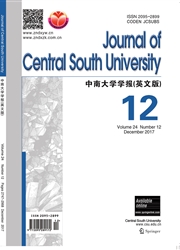

 中文摘要:
中文摘要:
Research on the distribution of smoke in tunnels is significant for the fire emergency rescue after an operating metro train catches fire. A dynamic grid technique was adopted to research the law of smoke flow diffusion inside the tunnel when the bottom of a metro train was on fire and to compare the effect of longitudinal ventilation modes on the smoke motion when the burning train stopped. Research results show that the slipstream curves around the train obtained by numerical simulation are consistent with experimental data. When the train decelerates, the smoke flow first extends to the tail of the train. With the decrease of the train’s speed, the smoke flow diffuses to the head of the train. After the train stops, the slipstream around the train formed in the process of train operation plays a leading role in the smoke diffusion in the tunnel. The smoke flow quickly diffuses to the domain in front of the train. After forward mechanical ventilation is provided, the smoke flow inside the tunnel continues to diffuse downstream. When reverse mechanical ventilation operates, the smoke in front of the train flows back rapidly and diffuses to the rear of the train.
 英文摘要:
英文摘要:
Research on the distribution of smoke in tunnels is significant for the fire emergency rescue after an operating metro train catches fire. A dynamic grid technique was adopted to research the law of smoke flow diffusion inside the tunnel when the bottom of a metro train was on fire and to compare the effect of longitudinal ventilation modes on the smoke motion when the burning train stopped. Research results show that the slipstream curves around the train obtained by numerical simulation are consistent with experimental data. When the train decelerates, the smoke flow first extends to the tail of the train. With the decrease of the train's speed, the smoke flow diffuses to the head of the train. After the train stops, the slipstream around the train formed in the process of train operation plays a leading role in the smoke diffusion in the tunnel. The smoke flow quickly diffuses to the domain in front of the train. After forward mechanical ventilation is provided, the smoke flow inside the tunnel continues to diffuse downstream. When reverse mechanical ventilation operates, the smoke in front of the train flows back rapidly and diffuses to the rear of the train.
 同期刊论文项目
同期刊论文项目
 同项目期刊论文
同项目期刊论文
 Forecasting models for wind speed using wavelet, wavelet packet, time series and Artificial Neural N
Forecasting models for wind speed using wavelet, wavelet packet, time series and Artificial Neural N Comparison of new hybrid FEEMD-MLP, FEEMD-ANFIS, Wavelet Packet-MLP and Wavelet Packet-ANFIS for win
Comparison of new hybrid FEEMD-MLP, FEEMD-ANFIS, Wavelet Packet-MLP and Wavelet Packet-ANFIS for win 期刊信息
期刊信息
